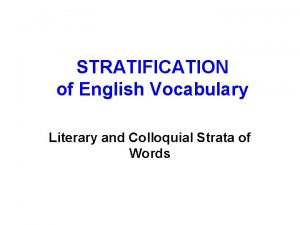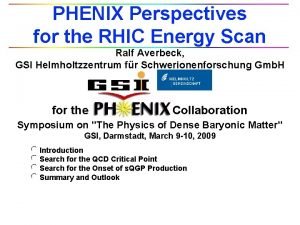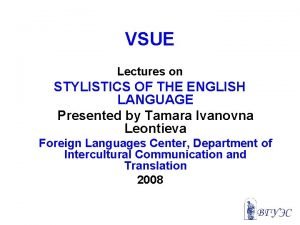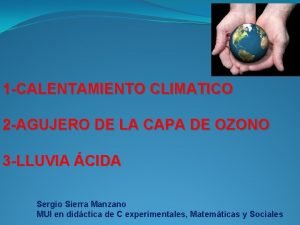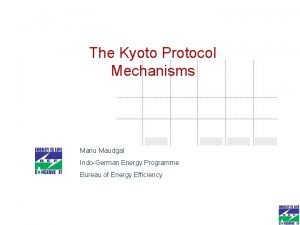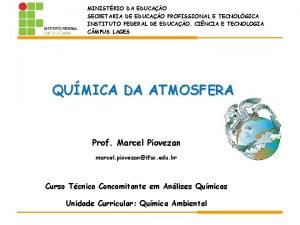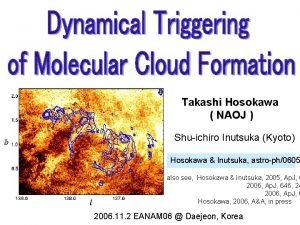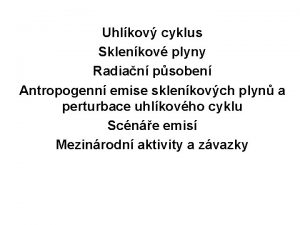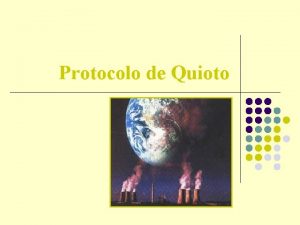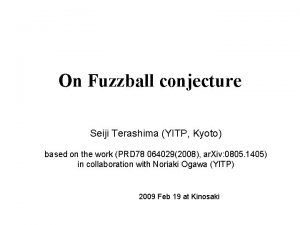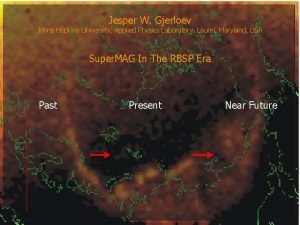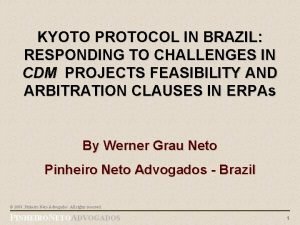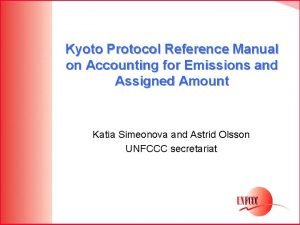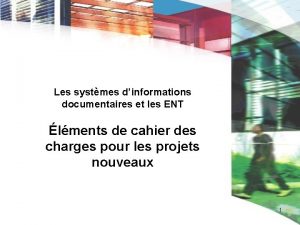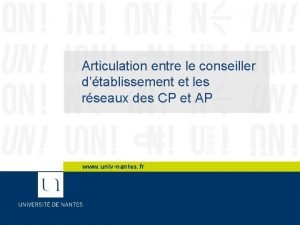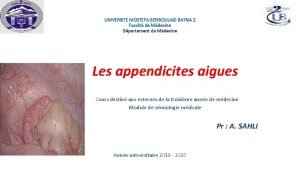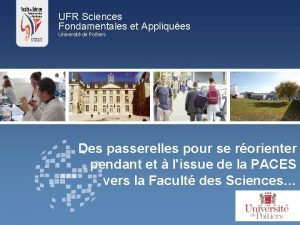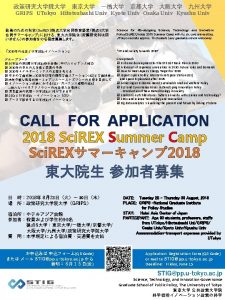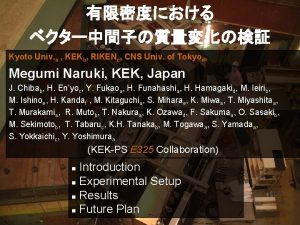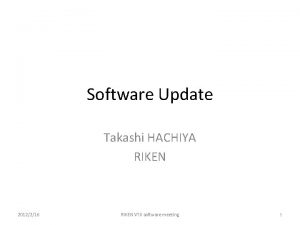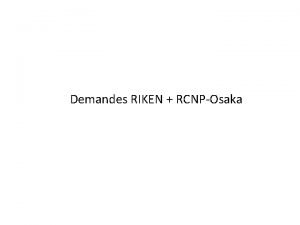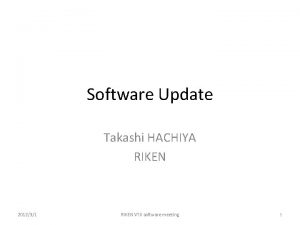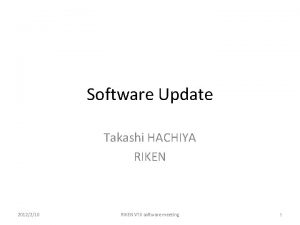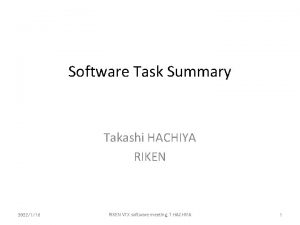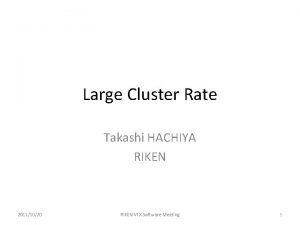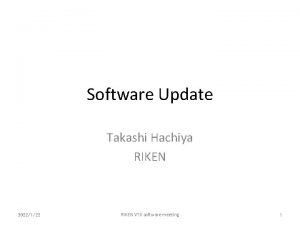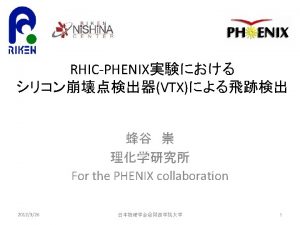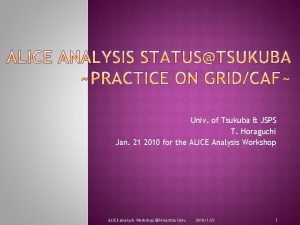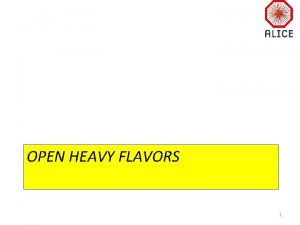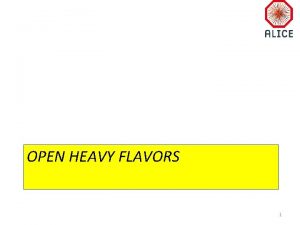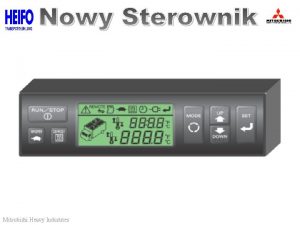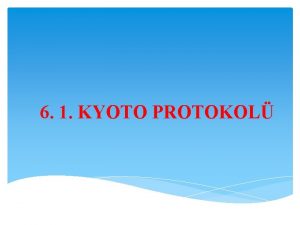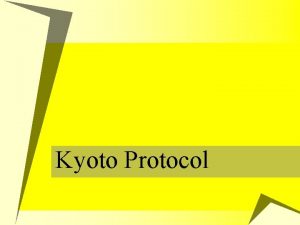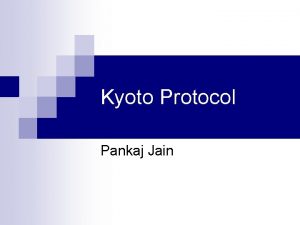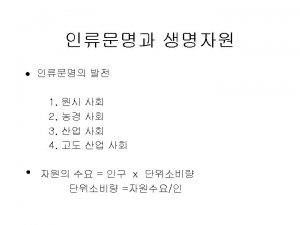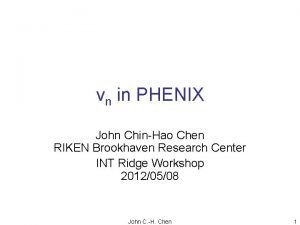Kyoto Univ JSPS RIKEN PHENIX n PHENIX heavy





![Kyoto Univ. / JSPS / RIKEN HBD Event Display HBD charge [p. e. ] Kyoto Univ. / JSPS / RIKEN HBD Event Display HBD charge [p. e. ]](https://slidetodoc.com/presentation_image_h/d92f7e6106fbf3feff60cfb2a55e2339/image-6.jpg)


















- Slides: 24



Kyoto Univ. / JSPS / RIKEN PHENIXにおける重クォーク生成測定 n PHENIXにおける重クォーク生成の測定 – heavy meson 崩壊からの単電子を測定 n PHENIXで測定される電子の生成源 photonic electron non-photonic electron n 光子転換 n n Dalitz 崩壊 n heavy meson 崩壊 ( 欲しい signal ) Kaon 崩壊 n vector meson 崩壊 n 直接光子生成 small, but significant at high p. T 2010/9/11 JPS fall meeting 3

Kyoto Univ. / JSPS / RIKEN heavy meson測定におけるバックグラウンド simulation result of e yield photonic electron dominant background n 光子転換 n Dalitz 崩壊 n background HBD により除去 直接光子生成 small, but significant at high p. T photonic ~95% non-photonic electron n heavy meson 崩壊 ( 欲しい signal ) Kaon 崩壊 background vector meson 崩壊 ~ a few% of non-photonic electrons negligible 2010/9/11 JPS fall meeting 4

Kyoto Univ. / JSPS / RIKEN Hadron Blind Detector (HBD) n Hadron Blind Detector – Cs. I蒸着のGEMによるgas Cherenkov 検出器 n n hadron 除去( hadron 除去能力 > 10 ) – 27 mm pad size n – 1つの電子通過に対して 約 20 個の photoelectron を放出 CF 4 gas HV n γ e- Primary ionization 2010/9/11 photonic electron ( pair electrons ) Mesh Cs. I layer Triple GEM Readout Pads hadron : 平均約 1 photoelectron non-photonic electron ( single electron ) 50 cm HBD Cherenkov blob 直径 ~ 36 mm – non-photonicとphotonicでクラスターの電 荷量が異なる n JPS fall meeting 電荷量によって区別することが可能 5
![Kyoto Univ JSPS RIKEN HBD Event Display HBD charge p e Kyoto Univ. / JSPS / RIKEN HBD Event Display HBD charge [p. e. ]](https://slidetodoc.com/presentation_image_h/d92f7e6106fbf3feff60cfb2a55e2339/image-6.jpg)
Kyoto Univ. / JSPS / RIKEN HBD Event Display HBD charge [p. e. ] Clustering Algorithm Not Stable seed pad electron track Dead N n n S seed pad: pad with large charge (> 3 p. e. ) Dead S seed pad N add blob (cluster) information private clustering algorithm • make a cluster with seed pads • add neighbor pads to the cluster • cluster charge is the sum of pad charges 6

Kyoto Univ. / JSPS / RIKEN Electron Cut n electron cut – – – – n abs(bbc_z) < 20 cm quality==31|51|63 n 0>=2 e/p cut ecore>0, mom>0 abs(emcsdphi_e)<4, abs(emcsdz_e)<4 prob>0. 01 hbd association cut – abs(hbdsdphi) < 3. 5 – abs(hbdsdz) < 3. 5 – hbd_cluster_size >=2 : (reject fake hit) 2010/9/11 JPS fall meeting 7

Kyoto Univ. / JSPS / RIKEN HBD non-photonic & photonic 識別能力 n n non-photonic electron と photonic electron は HBD のクラスター電荷量によ り区別される non-photonic electrons と photonic electrons に対するクラスター電荷量分布 は Dalitz 領域の electron pair を用いて 測定可能 – Dalitz 領域: pair mass < 135 Me. V non-photonic electron eff. ~ 80% reject single e cluster 2010/9/11 eff. ~ 30% JPS fall meeting merged cluster 8

Kyoto Univ. / JSPS / RIKEN HBD charge distribution (East) #{bin content}/ #{all entry} North South Sect 0 Sect 3 low stat. very low stat. not stable gain Sect 1 very low stat. Sect 4 very low stat. Sect 2 Sect 5 Red: merged cluster Blue: separated cluster n Not including HBD efficiency – Integral(0, inf) = 1 9

Kyoto Univ. / JSPS / RIKEN HBD charge distribution (West) North South Sect 6 Sect 9 strange shape low stat. Sect 7 Sect 10 low stat. Sect 8 low stat. Sect 11 Red: merged cluster Blue: separated cluster 10

HBD charge distribution for Hadrons (fake hits) Kyoto Univ. / JSPS / RIKEN HBD charge distribution of “hadron cut” + “hbd association cut” tracks requiring following cuts n – hadron cut n n n n n – n n n abs(bbc_z) < 20 cm quality == 63 mom > 0. 5 && mom < 3. 0 n 0 <= 0 ecore > 0 e/p <0. 4 abs(emcsdphi_e)<4, abs(emcsdz_e)<4 prob < 0. 01 hbdsect >= 0 && hbdsect < 12 – (tracks passing HBD acceptance) threshold in offline code hbd association cut n n #{hadron cut && hbd associ cut}/ #{hadron cut} abs(hbdsdphi) < 3. 5 abs(hbdsdz) < 3. 5 hbdsize >= 2 HBD charge [p. e. ] normalized with the number of tracks satisfying hadron cut hadron efficiency < 10% 11

Kyoto Univ. / JSPS / RIKEN HBD efficiency with J/phi events using good sector (sect 2, 3, 4(south), 8, 9, 10) HBD association efficiency w/o HBD size cut n HBD cut HBD association efficiency w/ HBD size cut n – abs(hbdsdphi) < 3. 5 – abs(hbdsdz) < 3. 5 – hbdsize >= 2 今使用しているcut – abs(hbdsdphi) < 3. 5 – abs(hbdsdz) < 3. 5 n efficiency ~ 193/213 = 91% HBD cut n efficiency ~ 162/213 = 76%

HBD efficiency with J/phi events (select good region) Kyoto Univ. / JSPS / RIKEN 14. 0 cm good region HBD association efficiency w/o HBD size cut n HBD cut 18. 0 cm 26. 5 cm HBD association efficiency w/ HBD size cut n efficiency ~ 100% within error HBD cut – abs(hbdsdphi) < 3. 5 – abs(hbdsdz) < 3. 5 – hbdsize >= 2 – abs(hbdsdphi) < 3. 5 – abs(hbdsdz) < 3. 5 n 22. 9 cm good region n efficiency ~ 66/77 = 86%

Kyoto Univ. / JSPS / RIKEN データからの single e cluster 成分と merged cluster 成分の分離 HBD cluster charge distribution for electron tracks n single e peak pt ごとに single e cluster の 成分と merged clusterの成 分の比が異なるのがわかる merged peak – pt が高くなるにつれて、nonphotonic 成分の占める割合が 大きくなっているのがわかる。 fitting result fitting with the reference charge distributions 8 north) 0. 75 < for pt <electron 1. 00 Ge. V/c HBD(sect charge distribution tracks sect 8 north 0. 75<pt<1. 00 Ge. V/c n リファレンスの電荷量分布を fit することにより、single e cluster の数と merged cluster の数を導出する – determine Nesingle and Nemerge 2010/9/11 JPS fall meeting 14

Kyoto Univ. / JSPS / RIKEN pt distribution of each component (East) North South Sect 0 Sect 3 Sect 1 Sect 4 Sect 2 Sect 5 NDF = 94 2010/9/11 JPS fall meeting 15

Kyoto Univ. / JSPS / RIKEN pt distribution of each component (West) North South Sect 6 Sect 9 Sect 7 Sect 10 Sect 8 Sect 11 Red: merged cluster Blue: separated cluster NDF = 94 16

Kyoto Univ. / JSPS / RIKEN single e cluster と merged cluster の pt spectra single e cluster and merged cluster spectra n n fitting 結果、 Nesingle と Nemerge を pt に対して plot 2つの異なる slope を持っていること を確認 – non-photonic electron is dominant in single e cluster event – photonic electron is dominant in merged cluster event n electron の分布の 2つの異なる成 分の分離に成功 – pt=1 Ge. V/cで ΔNsingle/Nsingle~ 0. 3%の誤 差 fitting により求めたNesingle 、 Nemerge 、Nfake heavy quark e photonic e sources pt に対する振る舞いは正しく一致 2010/9/11 JPS fall meeting cross section result of run 2005 17

Kyoto Univ. / JSPS / RIKEN non-photonic electronと photonic electron の抽出 ~ next step ~ electron candidates in detected tracks non-photonic electron 欲しい signal c) a) non-photonic electron b) photonic electron (single e cluster on HBD) c) photonic electron (merged cluster on HBD) a) b) HBD merged cluster photonic electron (separated event ) HBD single e cluster n single e cluster には若干の photonic electron が混ざっている – これを取り除くことにより nonphotonic electron の収量が得られる – HBD の simulation により、 この割合を評価することができる 2010/9/11 JPS fall meeting 18

calculation of the fraction of photonic electron in single electron event • the positions of 2 separate clusters produced by Dalitz electron pair are close each other – Dalitz pair makes correlation in distance between clusters • different cluster distribution around the track between nonphotonic election and photonic election – calculate the cluster distance distribution for non-photonic elections and photonic electrons – fit these distributions to cluster distribution of Run 9 electron event, detected and determine the fraction e+ e π D single cluster produced by non-photonic electron eanother cluster should be found around the detected track single cluster produced 19 by photonic electron

Kyoto Univ. / JSPS / RIKEN non-photonic and photonic electron spectra reference r distribution form Dalitz events correlation other clusters r distribution + fitting 0. 75 < pt < 1. 00 Ge. V/c Red: separated clusters Blue: merged clusters r [cm] no correlation ~ same distribution as non-photonic electron clusters (no correlation) r [cm] Black : electron data (0. 75 < pt < 1. 00 Ge. V/c) Blue: merged cluster component Red: separated cluster component Violet: Blue + Red 20

Kyoto Univ. / JSPS / RIKEN difficulties in reference distribution reference r distribution form Dalitz events n 0. 75 < pt < 1. 00 Ge. V/c not same as real distribution – large angle decay of pi 0 is out of Central Arm acceptance n distance [cm] n low statistics PISA simulation is required – PISA analysis is on going 2010/9/11 JPS fall meeting 21

Kyoto Univ. / JSPS / RIKEN Roadmap to ALL n HBD simulation (hopefully finish by Nov. ) – on going … – confirm HBD response for electrons – calculate the distance distribution n n extract non-photonic electron spectrum determine cross section spectrum (hopefully finish by Dec. or mid. Jan. ) – acc. x eff. calculation – compare with old data n calculation of the asymmetry – Preliminary request (in this fiscal year !? ) – systematic error estimation 2010/9/11 JPS fall meeting 22

Kyoto Univ. / JSPS / RIKEN expected error bar of ALL 非対称度の理論曲線 と予想統計誤差 fitting result (sect 8 north) 0. 75 < pt < 1. 00 Ge. V/c ε = S/(S+N) ~10 -3 ~10 -2 ~10 -3 accept region 2010/9/11 efficiency turn on curve assumption PB = 57%, PY = 57% eff(non-photonic) = 80% eff(photonic) = 30% eff(fake hit) = 40% JPS fall meeting 23

 Plant
Plant Ratey rational functions
Ratey rational functions Jargonisms
Jargonisms Phenix scan
Phenix scan Pheonixscan
Pheonixscan Professional and social jargonisms
Professional and social jargonisms Mappa concettuale protocollo di kyoto
Mappa concettuale protocollo di kyoto Prtocolo de kyoto
Prtocolo de kyoto Hfc manu
Hfc manu Combustivels
Combustivels Kyoto
Kyoto Kyoto protocol
Kyoto protocol Protocolo de kyoto
Protocolo de kyoto Kyoto protocol objectives
Kyoto protocol objectives Yitp kyoto
Yitp kyoto Kyoto university vpn
Kyoto university vpn Menguin kyoto
Menguin kyoto Kyoto protocol brazil
Kyoto protocol brazil Kyoto protocol reference manual
Kyoto protocol reference manual Kyoto treaty apush
Kyoto treaty apush Univ valenciennes ent
Univ valenciennes ent Prodoc univ nantes
Prodoc univ nantes Pharmacie.univ-batna2
Pharmacie.univ-batna2 Faculté de médecine de constantine
Faculté de médecine de constantine Licence spi poitiers
Licence spi poitiers


